Tables: Formatting
Besides formatting text inside a table, there's various ways to format tables themselves:
- Table cell alignment
- Table borders
- Table shading
- Remove paragraph spacing in a table
- Bullet/Number lists in tables
Table cell alignment
Align content vertically and horizontally in the table cell via Table Layout > Alignment:
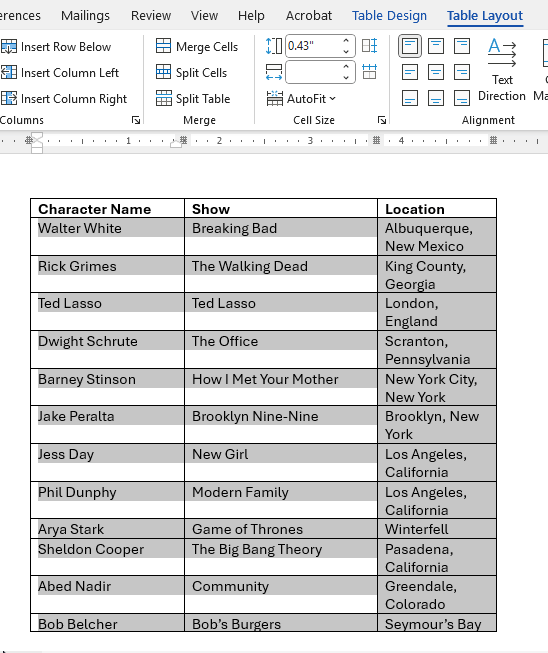
Table borders
You can choose whether to have table borders visible or not via options in Table Design > Borders drop down. The example below shows how these options work on a table that's been fully selected (hover over and click top left square):
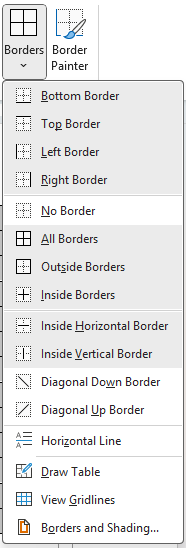 |
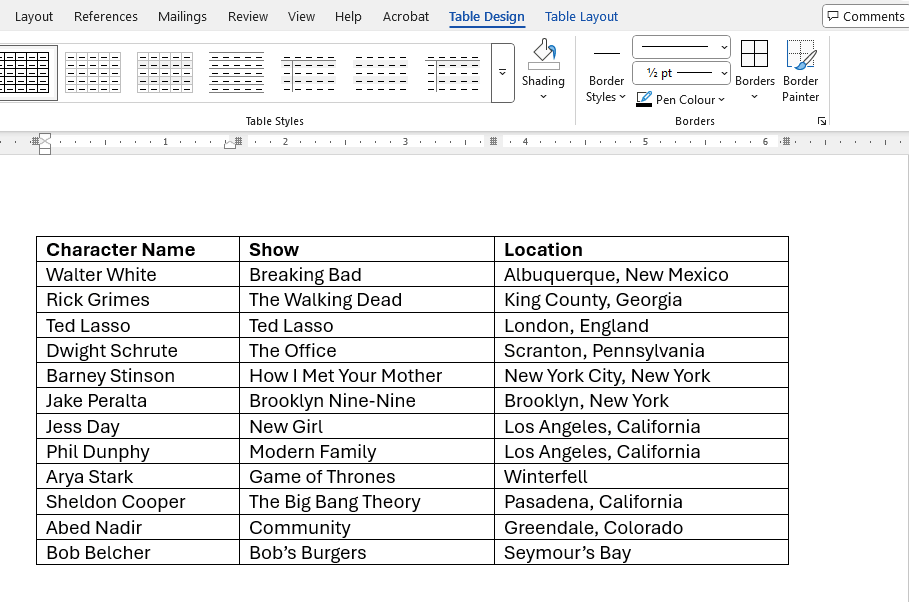 |
Table shading
You can colour the background of cell with the Shading colour palette via Table Design > Shading:
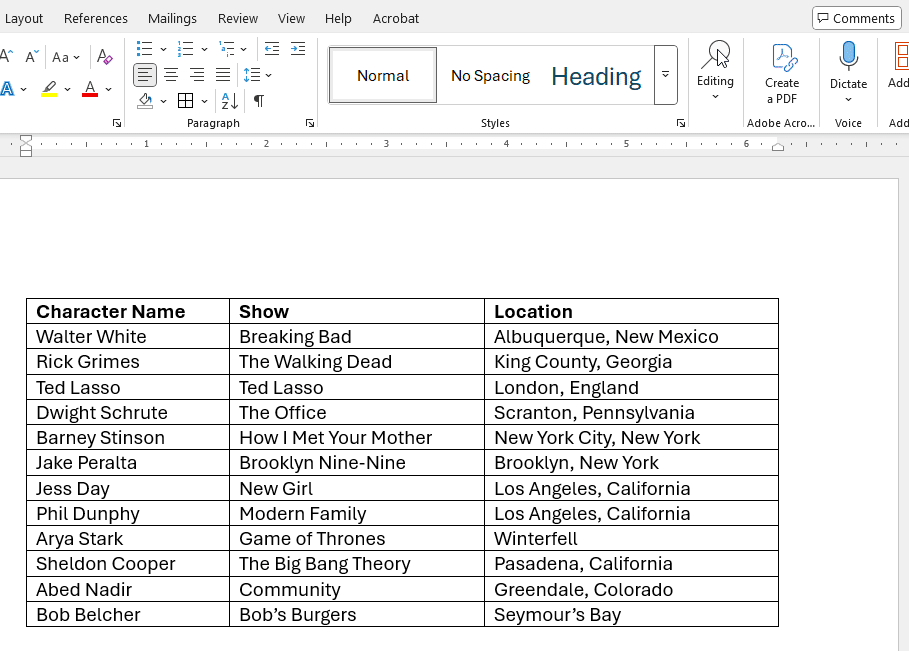
The example above is applying shading to a whole table but you might want to apply shading to just the header row like this:
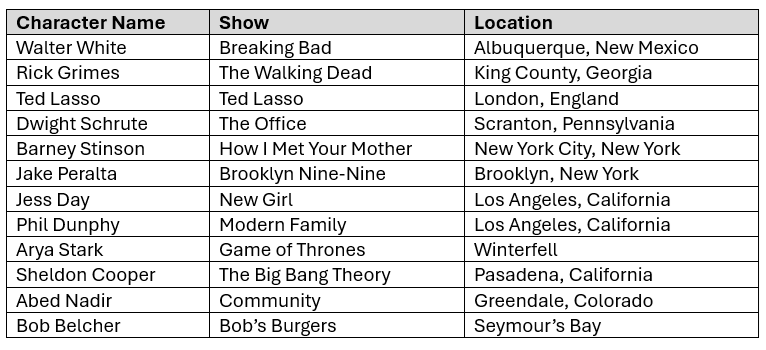
Remove paragraph spacing in a table
If you're coping a table from other Word document, Excel or a web browser it can come across with unwanted paragraph spacing. To remove this go to the Home > Paragraph options (bottom right corner button) and remove spacing 'points' as needed. Typically it's spacing after that needs reducing. Take a look:
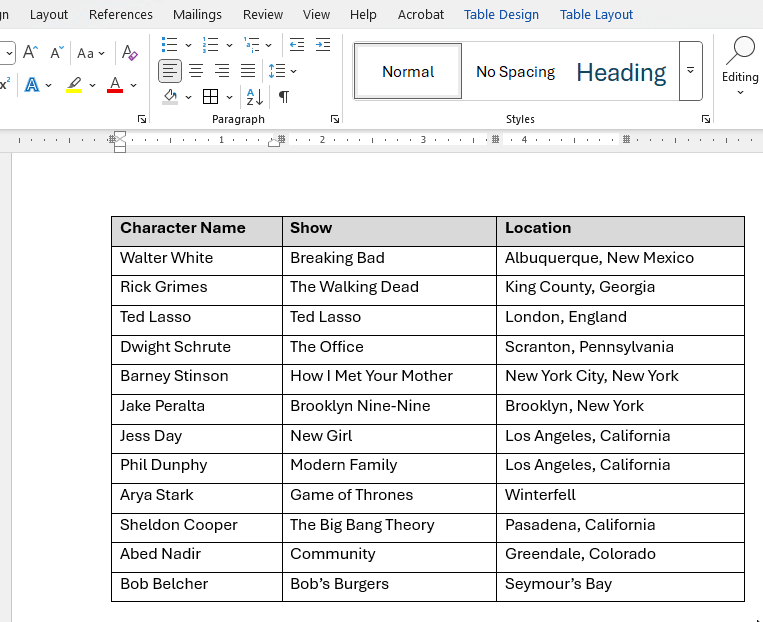
Bullet/Number lists in tables
You might find when applying a bullet list or number list to a table that the default indent Word applies isn't ideal in such a contrained space, see a quick fix here involving indent markers on the horizontal ruler: Table lists and indents.
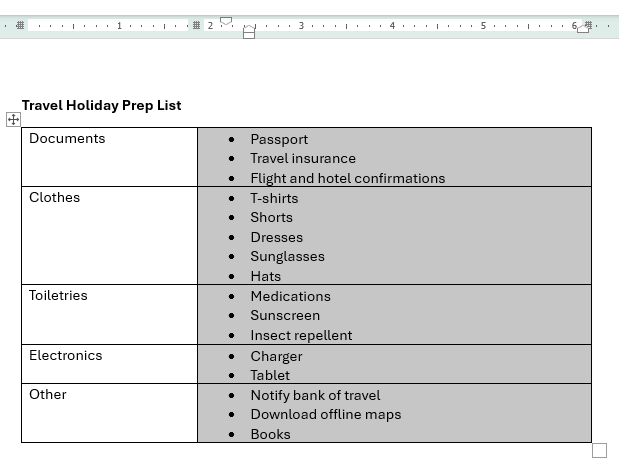
Cut, copy and paste tables
When it comes to pasting tables you get some different pasting options. Firs there's a referesher on cut, copy and paste if you need it:
- Cut: see Moving content
- Copy: see Copying content
- Paste: depending on what content you've cut or copied, and where you are pasting, you'll see different paste options in and around tables:
| Paste icon | Definition |
|---|---|
Pasting non-table content into a table
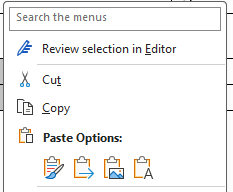 |
|
Paste - Keep Source Formatting
 |
Pastes the content into the table retaining its existing formatting. Think about whether you want external formatting brought into your table before choosing this option. |
Paste - Merge Formatting
 |
Paste content into the table taking on the destination table's formatting. |
Paste - Picture
 |
Pastes content as an image. Note: Depending on the size images can alter the table layout pushing columns and rows out. |
Paste - Keep Text Only
 |
Pastes text into the table without any formatting, just it's character value. Note: The content will not take on any formatting inside the destination table. |
Pasting cut/copied table content into a table
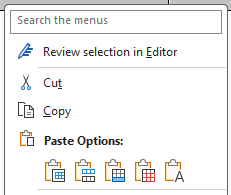 |
|
Paste - Nest Table
 |
Pastes the table content as a table within a table. Note: A word of warning, this can get messy, if using this option choose what content you want to paste selectively, and consider which cell to paste it in with the insertion point beforehand. Less is more here as it will almost certainly expand the destination cell's column width and row height. |
Paste - Merge Table
 |
I'd recommend not using this paste option within a table, or at least use it cautiously as it can be quite erratic pasting certain cells. Generally it pastes copied/cut table cell content in the rows below where you've selected, overwriting the content in those cells rather than 'merging' it. If you select all the columns in the destination table then use this option, it will typically add the cut/copied table content as new columns on the left, subsequently pushing everything else right and likely off the page. If you find your table in this situation and can't immediately undo the damage see this article on how to fix it: Tables extending off the page. |
Paste - Insert as New Rows
 |
Pastes table content as new row(s) below the row you pointed the insertion point at. |
Paste - Insert as New Columns
 |
Pastes content as new column(s) left of the column you pointed the insertion point at. |
Paste - Overwrite Cells
 |
Pastes over the data in the table with the copied/cut table content. The table layout doesn't change but the data does; the new data bring its formatting with it into the table. |
Paste - Keep Text Only
 |
Pastes table content without any formatting it originally had, just the character value. Note: The content will not take on any formatting in the destination table. |
Pasting cut/copied table content directly underneath a table
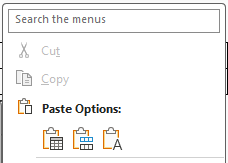 |
|
Paste - Keep Original Table Formatting
 |
Pastes table content 'as is' with its original formatting intact. It becomes part of the table above as added rows/columns underneath. Note: With this paste option the column border edges of the pasted content sometimes don't quite align with the table above so you may have to tweak it. |
Paste - Merge Table
 |
Pastes table content which becomes part of the destination table above it as added rows/columns. |
Paste - Keep Text Only
 |
Pastes table content without a table frame around it, content is instead structured by tabs for columns and hard returns for rows. |